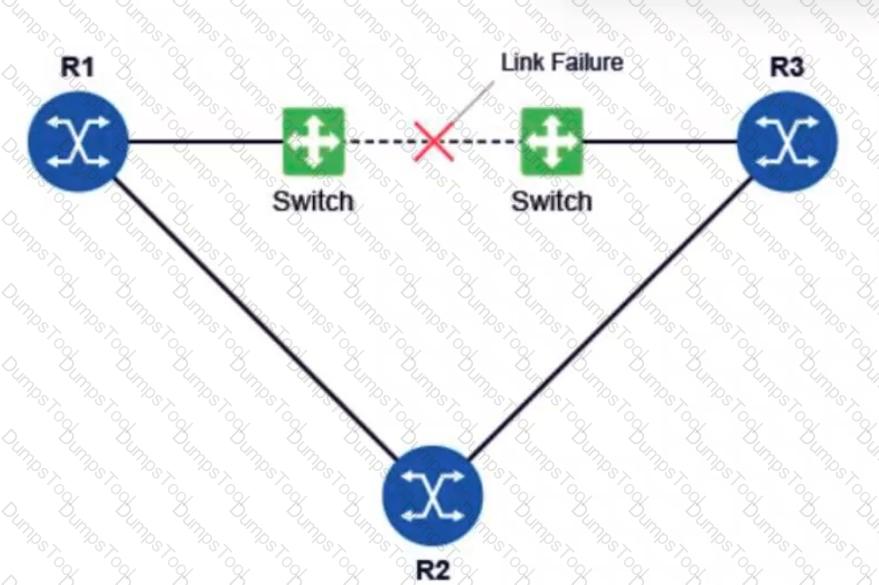Two IS-IS neighboring routers are trying to establish an adjacency, but the interface has been configured as broadcast on one of them and as point-to-point on the other. Why is the adjacency not established?
On a broadcast interface, an IS-IS router receives an LSP that is newer than the one on its database. Which of the following statements best describes the actions taken by the router as a consequence?

All routers in the diagram are running a link-state routing protocol. Before the link failure, all routers have operational adjacencies with each other and there is a BFD session between routers R1 and R3. After the link failure, which of the following affects the routing protocol’s convergence time?
Which of the following is a valid alternative representation of the IPv6 address
2001:0da8:0000:0000:0024:0000:4ab9:0300?
When multiple routing protocols offer a route for the same prefix, what part of the router is in charge of deciding which route to make active?
When using IS-IS in native mode for routing in a dual-stack IPv4/IPv6 environment, which of the following statements is FALSE?
A series of actions are triggered on a router as a result of enabling both loopfree-alternate for a link-state routing protocol and ip-fast-reroute. Which of the following is NOT one of those actions?